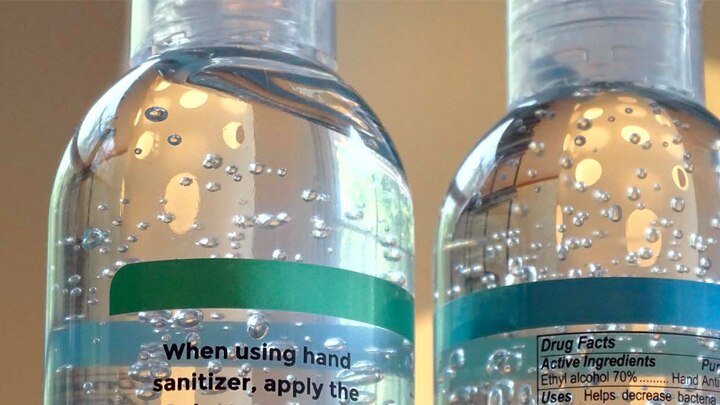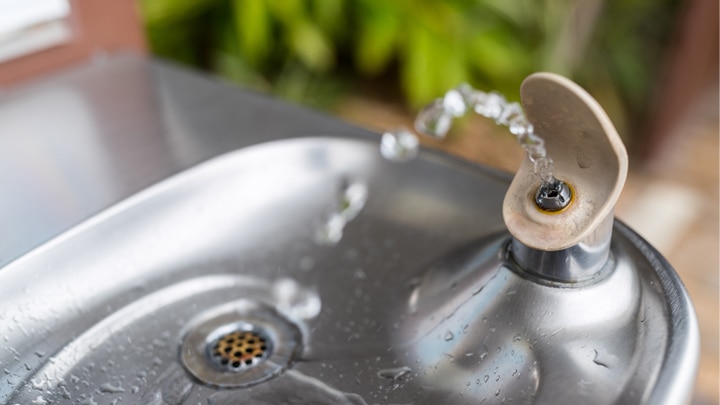
Hand sanitizers use ethyl or isopropyl alcohol as the active ingredient in a solution to kill viruses and bacteria.
The CDC recommends an alcohol content of at least 60 percent for hand sanitizers to be most effective, including for killing the coronavirus COVID-19. As such, most alcohol-based hand sanitizers manufactured and used in the U.S. are 60 to 90 percent alcohol by volume.
Why does storage matter and what is the hazard?
Hand sanitizers are flammable liquids
In general terms, the flash point of a liquid is the temperature at which the liquid will ignite when exposed to an open flame. Due to the high concentrations of alcohol, hand sanitizers will largely take on the flash point of the alcohol present, which, for both ethanol and isopropyl alcohol based solutions, is below 70°F. Meaning, at ambient conditions, hand sanitizers are flammable liquids that will ignite if exposed to an open flame.
Plastic containers present a fire protection challenge
Hand sanitizer is typically stored in plastic containers, which presents a unique and challenging fire hazard. When plastic containers are exposed to a fire’s radiant heat or direct flame, they begin to melt and fail. This causes the ignitable contents to be rapidly released into the fire. In a warehouse storage array, rack and solid pile storage can further exaggerate the fire protection challenge due to the potential for multidimensional and large pool fires which can quickly overwhelm the automatic sprinkler system.
Inadequate protection can mean an uncontrolled fire
If the area where hand sanitizer is stored is inadequately sprinkler protected, the entire contents of that area is often expected to be involved in the fire. If more than an incidental amount of hand sanitizer is stored in a warehouse, storage, or production area, pending fire walls or other passive construction protection features, the fire scenario is often a total loss of the building and contents, regardless of installed sprinklers.
Prevention measures to consider
Until adequate fire protection can be implemented, take the following measures to reduce the risk of an uncontrolled fire:
- Reduce storage volume of hand sanitizer to the minimum amount necessary onsite. Have suppliers ship smaller quantities on a more frequent basis or use off-site warehousing for excess storage.
- Store hand sanitizer no more than one pallet high and away from other ordinary combustible storage.
- Provide noncombustible containment skids below all hand sanitizer storage. Secondary containment will give sprinkler water a better chance to mix with the water-miscible liquid and dilute the flammable alcohol further toward a noncombustible solution.
- Do not store hand sanitizer in any rack configuration, except where protected with a Scheme B design.
Protection for your property
Due to the highly challenging nature of fire involving hand sanitizer in plastic containers, very few proven sprinkler protection options are available. Consider the following protection measures for your property:
- For buildings ≤ 30 ft. high and where all hand sanitizer containers are 16 oz. or less, Early Suppression Fast Response (ESFR) sprinkler systems and high output control-mode sprinkler designs can offer adequate protection for varying storage heights ≤ 12 ft., depending on sprinkler system design.
- For locations where hand sanitizer cannot be adequately protected by the installed ceiling sprinklers or no sprinkler protection is present, one of the following should be implemented:
- Use flammable liquid cabinets/lockers for storing all cartons of hand sanitizer.
- Relocate storage to a properly designed flammable liquid cut-off storage room.
- Maintain storage in a trailer or low value, detached building. If the trailer is docked at a loading dock, the dock door should be replaced with a minimum 1-hour rated fire door, kept normally closed, and provided with a fusible link or other automatic closure system.
- Relocate storage to storage racks and provide protection to meet NFPA 30, Scheme B design criteria. This protection design includes horizontal barriers and in rack sprinklers at all levels where hand sanitizer is stored.
- Consult your Liberty Mutual Risk or Account Engineer if considering implementing Scheme B protection
Summary
Hand sanitizer storage within a facility must be tightly controlled due to the significant fire hazard. Protection options are limited. Your Liberty Mutual Risk Engineering Consultant will provide recommendations based on site specific conditions to help minimize the frequency and severity of a fire involving flammable hand sanitizer storage.
Additional resources
NFPA 30, Flammable and Combustible Liquid Code, 2018 Edition.
Your safety and well-being are our primary concern. These suggestions are general in nature, so please ensure that any activities you contemplate comply with all federal, state, and local COVID-19 orders impacting your facilities or operations as well as CDC guidelines for social distancing, hygiene, and other recommended best practices.
Related insights
Our risk control services are advisory only. We assume no responsibility for: managing or controlling customer safety activities, implementing any recommended corrective measures, or identifying all potential hazards. No attempt has been made to interpret any referenced codes, standards, or regulations. Please refer to the appropriate government authority for interpretation or clarification.
This website is general in nature, and is provided as a courtesy to you. Information is accurate to the best of Liberty Mutual’s knowledge, but companies and individuals should not rely on it to prevent and mitigate all risks as an explanation of coverage or benefits under an insurance policy. Consult your professional advisor regarding your particular facts and circumstance. By citing external authorities or linking to other websites, Liberty Mutual is not endorsing them.



